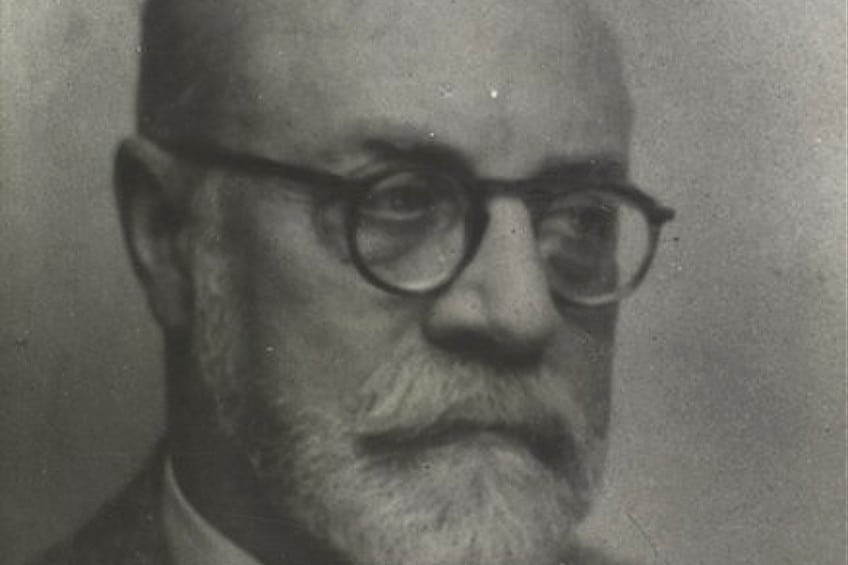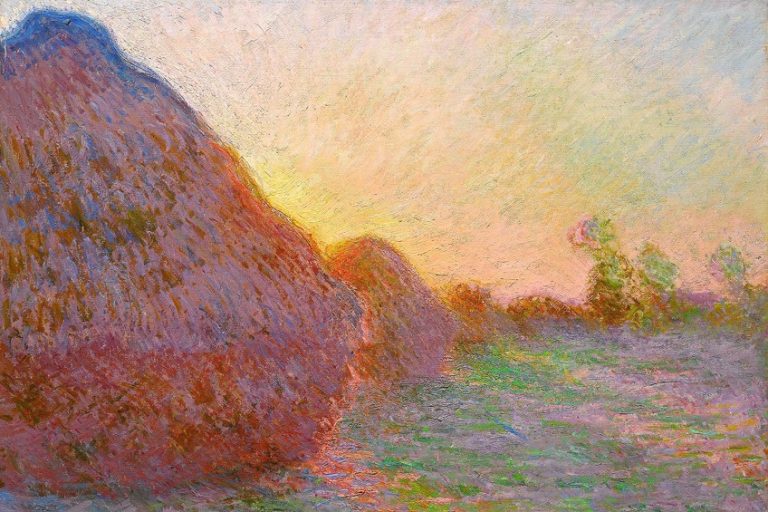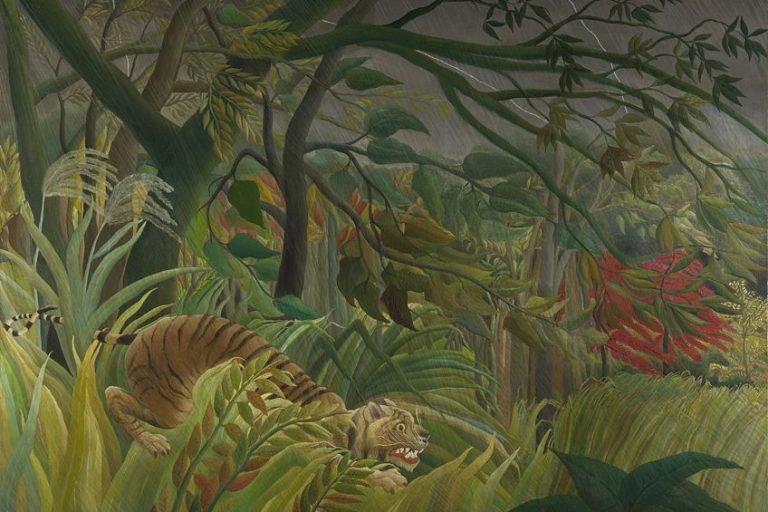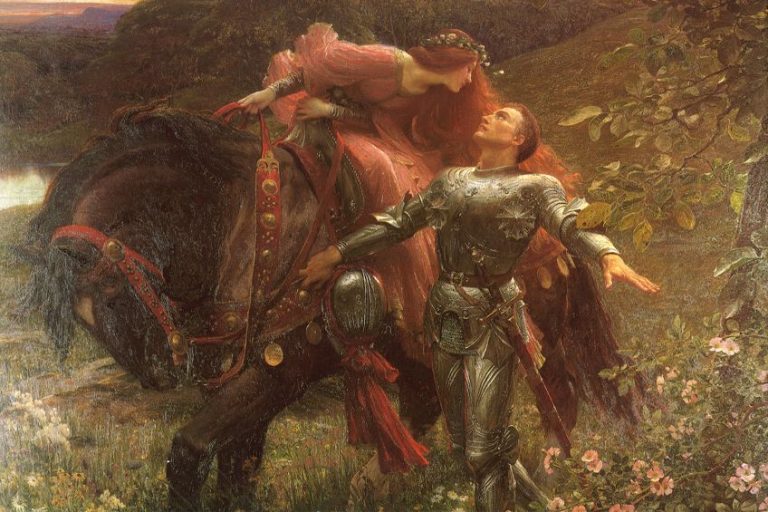“The Red Studio” by Henri Matisse – A Quick Red Studio Analysis
In the following article, you will learn more about the painting by the Fauvist Henri Matisse, The Red Studio from 1911. It is a life-size canvas wherein you are plunged and transported into a red room, which is none other than the artist’s studio. However, the main star of the show here is the encapsulating red. Let us look further.
Table of Contents
Artist Abstract: Who Was Henri Matisse?
Henri Émile Benoît Matisse was born on December 31, 1869, and died on November 3, 1954. He was born in Le Cateau-Cambrésis and initially studied law and decided he wanted to pursue art, which he started when he was recovering from illness around 1889.
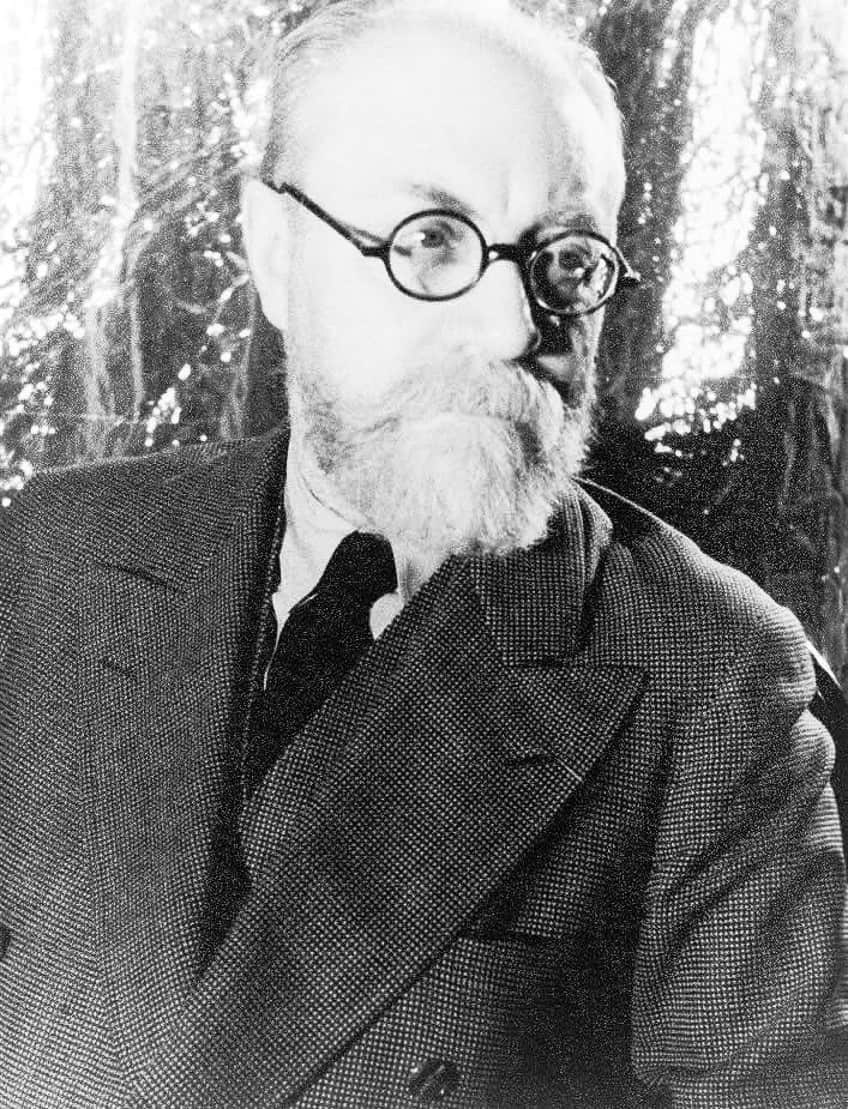
His art education was at the Académie Julian and École des Beaux-Arts. He was one of the leading French artists from the Fauvism art style during the early 1900s. Some of his most famous artworks include Woman with a Hat (1905), Le Bonheur de Vivre (1905 -1906), The Dessert: Harmony in Red (1908), and La Danse (1909).
The Red Studio (1911) by Henri Matisse in Context
| Artist | Henri Émile Benoît Matisse (1869 – 1954) |
| Date Painted | 1911 |
| Medium | Oil on canvas |
| Genre | Interior still life painting |
| Period / Movement | Expressionism/Fauvism |
| Dimensions (cm) | 181 x 219.1 |
| Series / Versions | Part of three other paintings following a similar theme |
| Where Is It Housed? | Museum of Modern Art (MoMA), New York City, United States |
| What It Is Worth | Purchased in 1949 by the Museum of Modern Art for $29, 000 |
Below you will learn more about The Red Studio by Henri Matisse and what makes it a vibrant display of a red interior or as it is called in French, L’Atelier Rouge. The Red Studio analysis will start with a contextual background and a discussion of the visual art elements composing it.
Contextual Analysis: A Brief Socio-Historical Overview
Henri Matisse was one of the leading Fauvist artists, and the art movement itself lasted for several years, starting from the later 1890s to around 1910. Matisse spearheaded it with André Derain, who was another French artist, for example, he painted The Houses of Parliament (1905 – 1906). The Fauvism art movement was known for its more striking utilization of colors that would not be true to the subject matter depicted.
Color became a large part of the visual effects of the painting and artists like Matisse sought to convey deeper feelings or emotions through color, moving away from how color was applied in more traditional or classical painting styles.

The Red Studio by Henri Matisse was the interior of his real studio in Issy-Les-Moulineaux in Paris, but his real studio was not red, but reportedly white. Interestingly, he painted another version of his studio, namely The Pink Studio (1911), which depicts a calmer hue of pink for the wall and floor. In 1910, Matisse was commissioned by Sergei Shchukin to paint The Red Studio, but the Russian art collector declined it, and Matisse kept it in his studio for several years, reportedly until 1926 when David Tennant purchased it.
It made its way to the Museum of Modern Art (MoMA) in 1949 when it was purchased from Georges Keller, reportedly for $29, 000.
Formal Analysis: A Brief Compositional Overview
The Red Studio analysis below will discuss the subject matter through a visual description and then a more in-depth look at how it is composed according to the art elements of color, texture, Line, Shape, Form, Space and how some of the principles of design come into play.
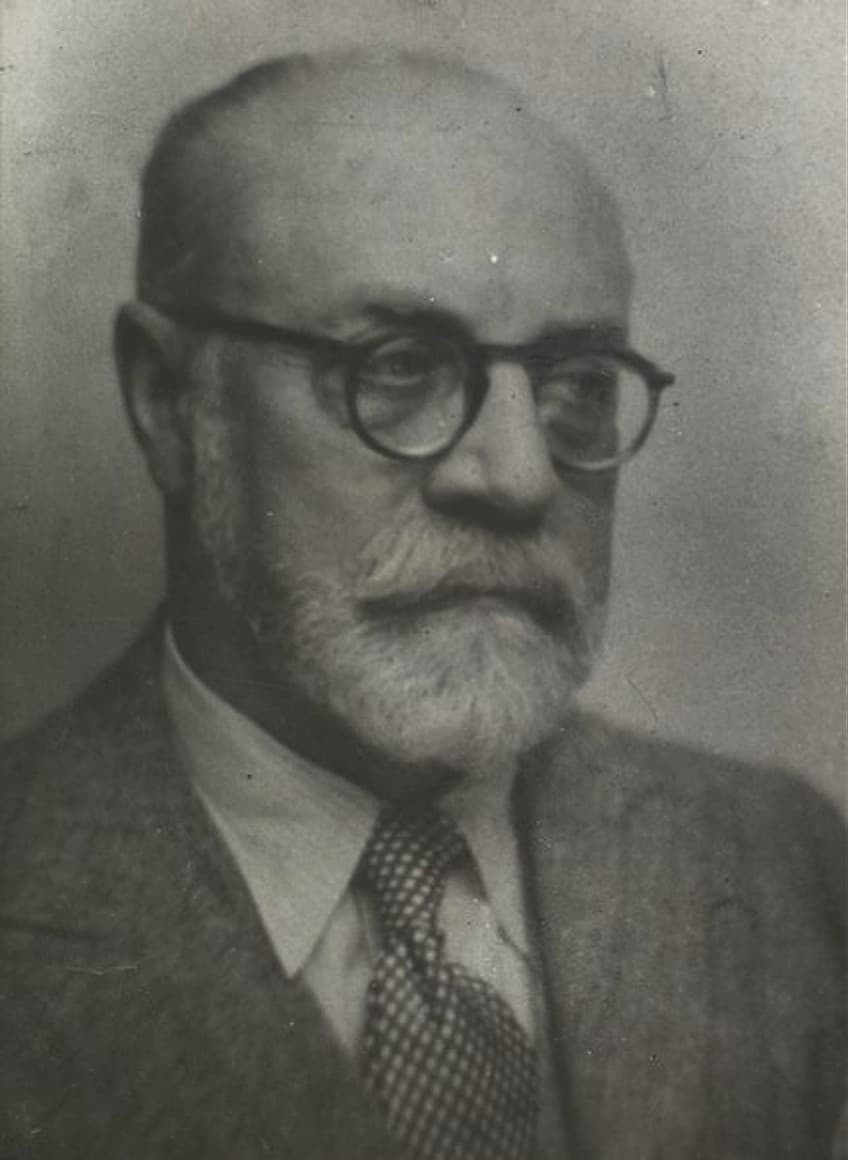
Subject Matter: Visual Description
The Red Studio by Henri Matisse depicts an interior scene, specifically what was Matisse’s studio. The entire room appears in a hue of red and there are various objects, which are painted in different colors, and furniture, which is delineated through outlines made in the red paint. In the lower left foreground is a table with several items on it, namely a wine glass near a plate with what appears to be indications of food in the form of blue scribbles. There is a box of crayons (these could also be pencils or charcoal) of which two pieces are out of the box and on the table as if ready to be used.
There is also a green bulbous-bodied, long-necked vase with a plant hanging and curling its way on the tabletop and around what appears to be a small statuette of a female figure.
Along the left wall is a window with what appears to be white-bluish curtains and a larger canvas leaning against the wall into the corner. There are several more paintings and a large, gilded frame leaning against the wall directly opposite us (the viewers). Several paintings are hanging on this wall too, and additionally, there is a grandfather clock without its hands, a chest of drawers with several items on top of it, against which is leaning another painting, a large vase on the floor to the right, and two bar stools with a sculpture on top each. Against the right wall is what appears to be an easel and a chair near the lower right corner.
The floor is also a solid plain open space of red, continuing from the walls.
Color
Color seemingly becomes just as much a part of the subject matter in The Red Studio by Henri Matisse. The dominant color is undoubtedly the Venetian red that fills and informs the entire space, creating color harmony and unity despite the seeming contrast of the monochrome qualities.
An interesting fact is that Matisse was believed to have painted over the original colors he started with.
You will notice these under the thinly applied layer of red, consisting of a pink floor, ochre furniture, and what has also been discovered as vertical green panels and a blue wall. These panels would have been part of his studio’s wall, more visible in his other painting titled The Pink Studio (1911).
Texture
Matisse’s fluid utilization of brushstrokes evokes the more physical texture of the paint on the canvas, which appears smoothly and thinly applied, and thicker in some areas. There is also some implied texture, for example, the gleaming qualities of the wine glass and vase in the foreground or the sheen of the gilded frame in the background.
Line
There are a variety of lines in The Red Studio by Henri Matisse, from straight lines to curved, horizontal to vertical, short, long, thick, thin, you name it! This creates not only variety, as mentioned, but also movement and gives the composition a sort of liveliness amidst the more monotone and solidity of the red.
Henri Matisse also created his outlines delineating the furniture through the process of painting around them. Their color is simply the color underneath the red layer on the canvas itself.
Shape and Form
There are a variety of organic and geometric shapes and forms in The Red Studio by Henri Matisse – an interplay between two and three dimensions. For example, the upright rectangular shape of the grandfather clock, the rectangular and square shapes of the canvases, the circles created by the plant’s leaves in the foreground and flat circles denoting the handles of the chest of drawers, and the more triangular shapes created by the stools with sculptures on them in the background.
Space
The space depicted in The Red Studio by Henri Matisse is his studio, which was in Issy-Les-Moulineaux in Paris. However, the pictorial space is unique and filled with varying offset perspectives and angles, evident in the way the furniture has been depicted.
For example, notice the angle of the table in the lower left foreground, which appears as if viewed from above, or the chair in the lower right corner placed at an angle.
These angles seemingly converge to the central point, which is the grandfather clock. Furthermore, notice where the left wall meets the back wall, there is no clear line indicating the corner between these two walls, only the placement of the large canvas implies the corner.
Matisse: A Heart Full of Colors
Before he painted The Red Studio in 1911, Matisse traveled abroad, and reportedly visited Spain, Germany, and Russia, which influenced his artistic style in a more expressive and experimental manner. Matisse seemingly followed his heart when it came to colors, and red held a significant spot in his process.
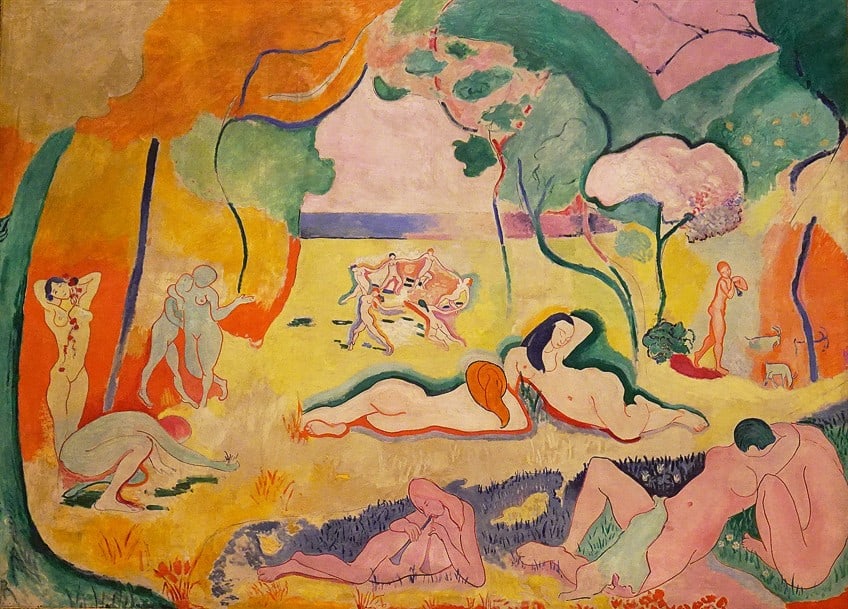
This article explored and discussed Henri Matisse’s “The Red Studio” analysis, and took a closer look at what made it such a compelling composition of red. Although it appears flat and spatially distorted, and some do not like it, it is nonetheless the artist’s red rendition of who he was and what he created – a welcome into his world.
Frequently Asked Questions
Who Painted The Red Studio?
The Red Studio (1911) was painted by Henri Matisse, who was a Fauvist artist also known to work in Expressionism and Primitivism. It is an oil on canvas measuring 181 x 219.1 centimeters.
Why Did Henri Matisse Paint The Red Studio?
The Red Studio (1911) by Henri Matisse was commissioned by Sergei Shchukin in 1910, who was one of Matisse’s art patrons and a collector of Impressionist, post-Impressionist, Fauvist, Neo-Impressionist, and Expressionist artworks.
Where Is The Red Studio by Henri Matisse?
The oil on canvas painting titled The Red Studio by Henri Matisse is held at the Museum of Modern Art (MoMA) in New York City, United States. It was reportedly acquired by the museum in 1949 for $29, 000 from Georges Keller. He acquired it from the previous owner who was David Tennant, with the latter acquiring it in 1926.
Alicia du Plessis is a multidisciplinary writer. She completed her Bachelor of Arts degree, majoring in Art History and Classical Civilization, as well as two Honors, namely, in Art History and Education and Development, at the University of KwaZulu-Natal, South Africa. For her main Honors project in Art History, she explored perceptions of the San Bushmen’s identity and the concept of the “Other”. She has also looked at the use of photography in art and how it has been used to portray people’s lives.
Alicia’s other areas of interest in Art History include the process of writing about Art History and how to analyze paintings. Some of her favorite art movements include Impressionism and German Expressionism. She is yet to complete her Masters in Art History (she would like to do this abroad in Europe) having given it some time to first develop more professional experience with the interest to one day lecture it too.
Alicia has been working for artincontext.com since 2021 as an author and art history expert. She has specialized in painting analysis and is covering most of our painting analysis.
Learn more about Alicia du Plessis and the Art in Context Team.
Cite this Article
Alicia, du Plessis, ““The Red Studio” by Henri Matisse – A Quick Red Studio Analysis.” Art in Context. May 17, 2023. URL: https://artincontext.org/the-red-studio-by-henri-matisse/
du Plessis, A. (2023, 17 May). “The Red Studio” by Henri Matisse – A Quick Red Studio Analysis. Art in Context. https://artincontext.org/the-red-studio-by-henri-matisse/
du Plessis, Alicia. ““The Red Studio” by Henri Matisse – A Quick Red Studio Analysis.” Art in Context, May 17, 2023. https://artincontext.org/the-red-studio-by-henri-matisse/.


